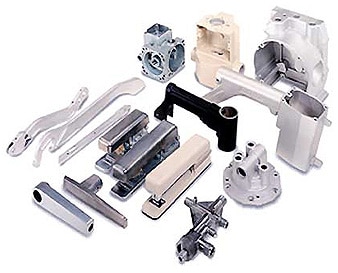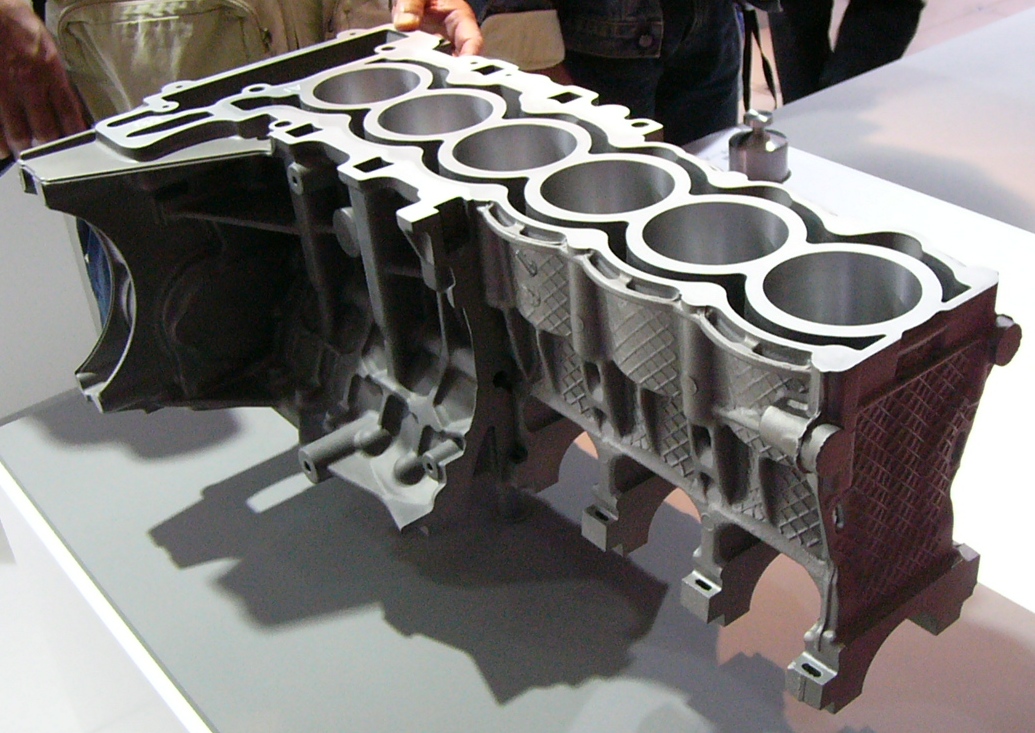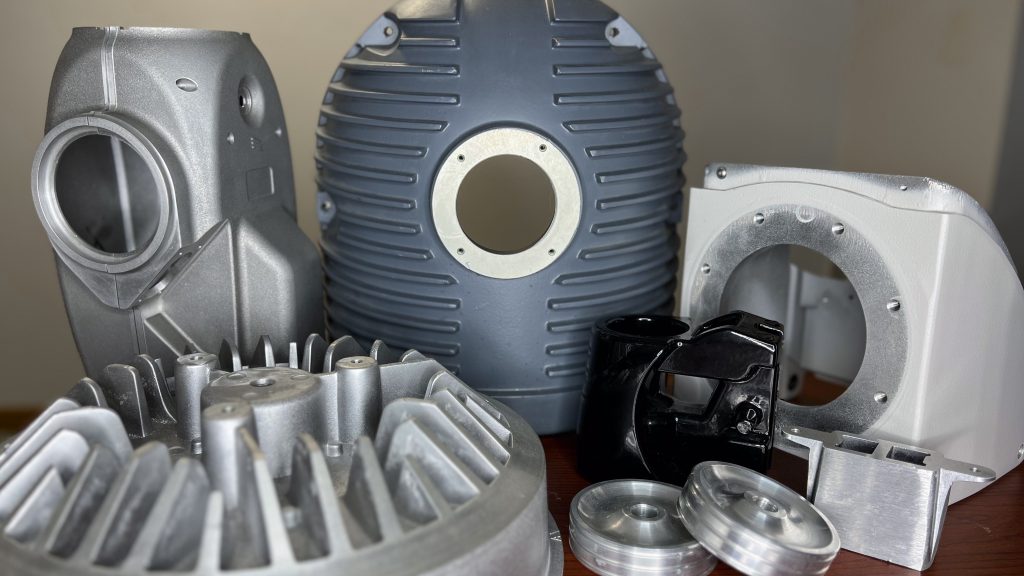Discovering the Versatile Makes Use Of and Applications of Light Weight Aluminum Castings in Modern Industries
Light weight aluminum spreadings have become essential to different contemporary markets because of their distinct residential properties. They supply substantial benefits in weight decrease, thermal conductivity, and deterioration resistance. From vehicle advancements to applications in durable goods and building, their convenience is remarkable. The true extent of their impact expands past instant benefits, hinting at more comprehensive effects for sustainability and effectiveness. What lies ahead for aluminum castings in an ever-evolving commercial landscape?
Automotive Sector Innovations
The vehicle sector has actually progressively embraced light weight aluminum spreadings to improve vehicle performance and efficiency. By utilizing light weight aluminum, producers can produce lighter parts, which contribute to improved fuel economy and lowered discharges. Key applications consist of engine blocks, transmission cases, and architectural components, where the product's strength-to-weight ratio provides resilience without including excess weight.
Aluminum spreadings additionally use superior thermal conductivity, which assists in better warmth dissipation, thus boosting engine performance. Developments in casting modern technologies, such as die spreading and sand casting, make it possible for the production of complicated geometries, permitting for innovative styles that maximize room and functionality.
The recyclability of light weight aluminum straightens with sustainability goals in the automobile field, advertising environmentally friendly methods. As the sector remains to innovate, the use of light weight aluminum spreadings is most likely to increase, driving additional advancements in automobile style and efficiency.
Aerospace Applications and Improvements
While the aerospace market remains to prioritize weight decrease and gas effectiveness, light weight aluminum castings have actually arised as a critical material option for different applications. Their light-weight nature, combined with high strength-to-weight proportions, permits for significant renovations in airplane efficiency and efficiency. Light weight aluminum castings are commonly made use of in structural parts, such as body frames and wing components, where lowering weight is important.
Recent advancements in light weight aluminum spreading modern technologies, consisting of enhanced alloy formulations and accuracy spreading methods, have further boosted the product's efficiency capacities. These advancements allow the production of complex geometries and complex designs while keeping architectural integrity. In addition, aluminum's exceptional rust resistance warranties durability and reliability in rough aerospace atmospheres.
As the aerospace sector significantly accepts sustainability, aluminum spreadings provide a recyclable remedy that lines up with environmentally friendly methods, making them a pivotal component in the development of next-generation airplane.
Consumer Product and Everyday Products
As consumers progressively look for lightweight yet long lasting materials for daily items, aluminum spreadings have actually obtained popularity in numerous consumer products. The one-of-a-kind residential properties of aluminum, including its resistance to rust and superb thermal conductivity, make it an optimal option for items like kitchenware, house appliances, and outside equipment. As an example, aluminum cast pots and frying pans provide also warm circulation, improving cooking performance. Additionally, using aluminum in products such as bike structures and baggage assures a balance between strength and portability. Makers value light weight aluminum castings for their versatility, as they can be conveniently molded into complex shapes while preserving architectural integrity. The capacity to recycle aluminum without deteriorating its homes lines up with expanding consumer choices for lasting items. Generally, aluminum spreadings are indispensable to the manufacturing of long lasting, practical, and cosmetically pleasing customer products, satisfying the demands of modern-day way of livings.
Building and Architectural Utilizes
Light weight aluminum spreadings have become an essential part in building and architectural layout, particularly due to their toughness and lightweight nature. These homes make aluminum an excellent option for various applications, including architectural aspects, facades, and attractive functions - Aluminum Castings. Builders and designers significantly utilize aluminum castings for home window frameworks, doors, and roof, improving both functionality and visual appeals. The material's resistance to deterioration even more extends its life expectancy, decreasing maintenance prices and making certain toughness in diverse ecological problems
In addition, light weight aluminum can be conveniently formed right into intricate styles, enabling innovative building expressions. Its versatility helps with the production of personalized pieces that satisfy certain layout needs, from elaborate barriers to intricate assistances. As sustainability becomes a priority, aluminum's recyclability includes to its charm in green construction methods. Generally, light weight aluminum spreadings are changing the building and construction sector by providing light-weight, long lasting, and aesthetically appealing solutions.
Electrical and Electronic Components
Light weight aluminum spreadings play an essential role in the production of light-weight electrical rooms, which improve mobility and effectiveness in different applications. In addition, their outstanding thermal conductivity makes them optimal for warmth sinks, ensuring peak efficiency and long life of digital elements. Furthermore, aluminum's conductive homes contribute to its usage in different electrical conductors, emphasizing its relevance in modern-day technology.
Lightweight Electric Units
Lightweight electric rooms play a vital role in shielding delicate electronic elements from ecological elements and physical damages. Built from light weight aluminum castings, these units are valued for their strength-to-weight proportion, making them perfect for various applications throughout sectors. Their light-weight nature help in minimizing overall system weight, which is important in mobile and portable electronic devices. Furthermore, aluminum's rust resistance boosts toughness, have a peek at this website extending the life-span of the enclosed components. The capability to mold aluminum right into complex shapes permits for customized styles, accommodating specific requirements while guaranteeing effective warm dissipation. Furthermore, these units can be conveniently integrated into existing systems, supplying flexibility and adaptability in modern-day technological atmospheres. On the whole, lightweight aluminum rooms substantially add to the efficiency of electronic gadgets.
Warm Sinks and Conductors
While several products are used in electronic elements, aluminum spreadings stick out for their effectiveness in warmth management as heat sinks and conductors. Their outstanding thermal conductivity enables for effective warmth dissipation, which is essential in preventing the getting too hot of digital tools. Light weight aluminum's light-weight nature further enhances its suitability for applications where weight is a significant factor, such as in aerospace and automobile markets. In addition, light weight aluminum spreadings can be conveniently formed into complex shapes, offering design flexibility for optimizing thermal performance. The deterioration resistance of light weight aluminum also adds to the durability and dependability of these components in various settings. As modern technology breakthroughs and tools become more portable, the need for efficient heat monitoring options, like aluminum castings, continues to expand.
Marine Sector Utilization
The marine industry significantly relies upon aluminum castings for their exceptional toughness and rust resistance. These properties make aluminum a suitable option for various applications, including watercraft hulls, engine elements, and marine hardware. The lightweight nature of aluminum castings allows improved gas efficiency and much easier maneuverability in boat, which is necessary for both commercial and entertainment vessels.

Light weight aluminum castings additionally give considerable cost advantages because of their long lifespan and low maintenance requirements, minimizing the overall functional expenditures for aquatic operators. Additionally, the convenience of aluminum enables complex designs that can fulfill specific efficiency demands.
Suppliers in the marine field use advanced casting strategies to create complex forms, ensuring that elements fulfill strenuous safety and efficiency standards. As the need for high-performance aquatic vessels expands, aluminum spreadings are placed as an essential product in enhancing the performance and durability of aquatic equipment.
Sustainability and Recycling in Light Weight Aluminum Spreading

Light Weight Aluminum Recycling Process
Reusing aluminum plays a necessary role in lessening ecological effect and preserving resources within the casting market. The aluminum recycling process starts with the collection of scrap light weight aluminum, which can include old elements, producing waste, and post-consumer products. This scrap is then arranged, cleansed, and shredded right into small pieces to promote melting.
Once prepared, the aluminum scrap is melted in a heater at reduced temperature levels than primary aluminum production, substantially minimizing energy consumption. The molten aluminum is then cast right into ingots or various other shapes for reuse in numerous applications - Aluminum Castings. This closed-loop system enables the effective recuperation of light weight aluminum, maintaining its buildings while reducing the need for virgin materials. Subsequently, the reusing procedure is an essential part of sustainable practices in light weight aluminum casting
Environmental Advantages
While light weight aluminum spreading plays an essential function in various industries, its ecological benefits are specifically remarkable relating to sustainability and source preservation. The light-weight nature of light weight aluminum contributes to power effectiveness in transportation, decreasing fuel consumption and exhausts. In addition, light weight aluminum spreading promotes using recycled materials, substantially reducing the energy needed for manufacturing contrasted to main aluminum. This recycling process reduces waste and lessens the ecological influence related to mining and refining raw products. Moreover, light weight aluminum is 100% recyclable without degradation of its homes, promoting a lasting lifecycle. By picking aluminum casting, sectors can substantially decrease their carbon footprint while advertising resource effectiveness, making it an important option in the quest of eco-friendly manufacturing methods.
Closed-Loop Equipments

Frequently Asked Questions
What Are the Secret Advantages of Aluminum Castings Over Other Products?
Aluminum castings offer lightweight buildings, superb corrosion resistance, and high strength-to-weight proportions. They can be easily built right into intricate forms, give excellent thermal and electric conductivity, and are cost-efficient, making them better over many alternative products.
How Is the Aluminum Casting Refine Eco-friendly?
The aluminum spreading procedure is environmentally friendly because of its recyclability, reduced power usage, and lowered waste production. Its capacity to use recycled materials reduces the carbon footprint, advertising sustainability within producing practices.
What Are Common Difficulties in Light Weight Aluminum Spreading Manufacturing?
Typical obstacles in light weight aluminum casting production consist of keeping dimensional precision, managing thermal contraction, avoiding defects like porosity and incorporations, making sure correct mold and mildew layout, and maximizing manufacturing performance while decreasing material waste and ecological influence.
Exactly How Do Aluminum Castings Contrast in Cost With Other Manufacturing Techniques?
Aluminum spreadings normally supply competitive prices contrasted to various other manufacturing methods, especially for medium to high-volume manufacturing. Their lower initial tooling expenses and efficient product use can cause desirable business economics over time.
What Future Trends Are Expected in Light Weight Aluminum Spreading Modern Technology?
Future fads in light weight aluminum spreading modern technology are expected to include developments in automation, enhanced alloy make-ups, boosted recycling techniques, and the combination of 3D printing, all focused on increasing effectiveness, minimizing costs, and lessening environmental impact.
Recent improvements in light weight aluminum casting innovations, consisting of enhanced alloy solutions and accuracy casting methods, have actually even more boosted the product's efficiency capabilities. Light weight aluminum spreadings have ended up being a necessary component in building and construction and architectural design, particularly due to their stamina and lightweight nature. The light weight aluminum recycling process starts with the collection of scrap aluminum, which can include old components, manufacturing waste, and post-consumer products. Once prepared, the light weight aluminum scrap is thawed in a heating system at reduced temperatures than key light weight aluminum manufacturing, considerably lowering energy intake. In addition, light weight aluminum spreading promotes the use of recycled products, considerably reducing the power required for manufacturing contrasted to primary light weight aluminum.